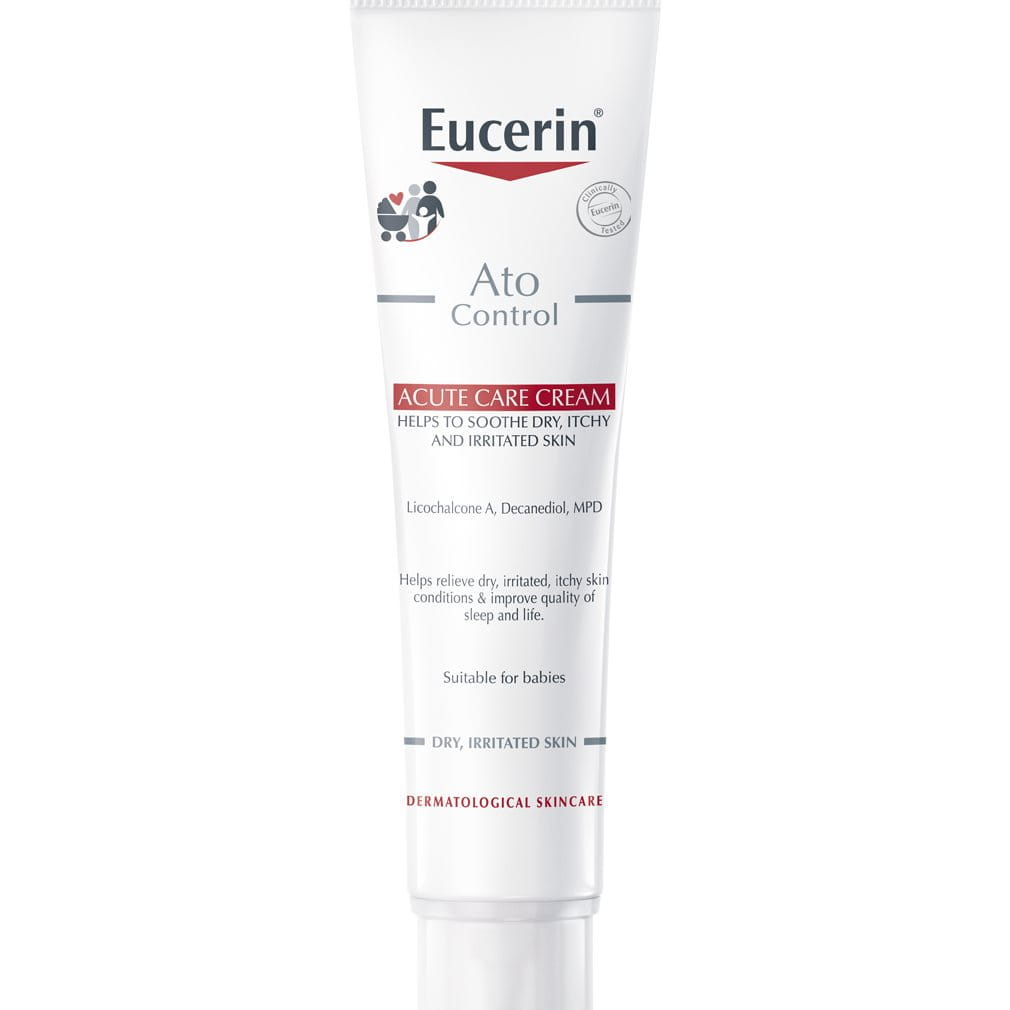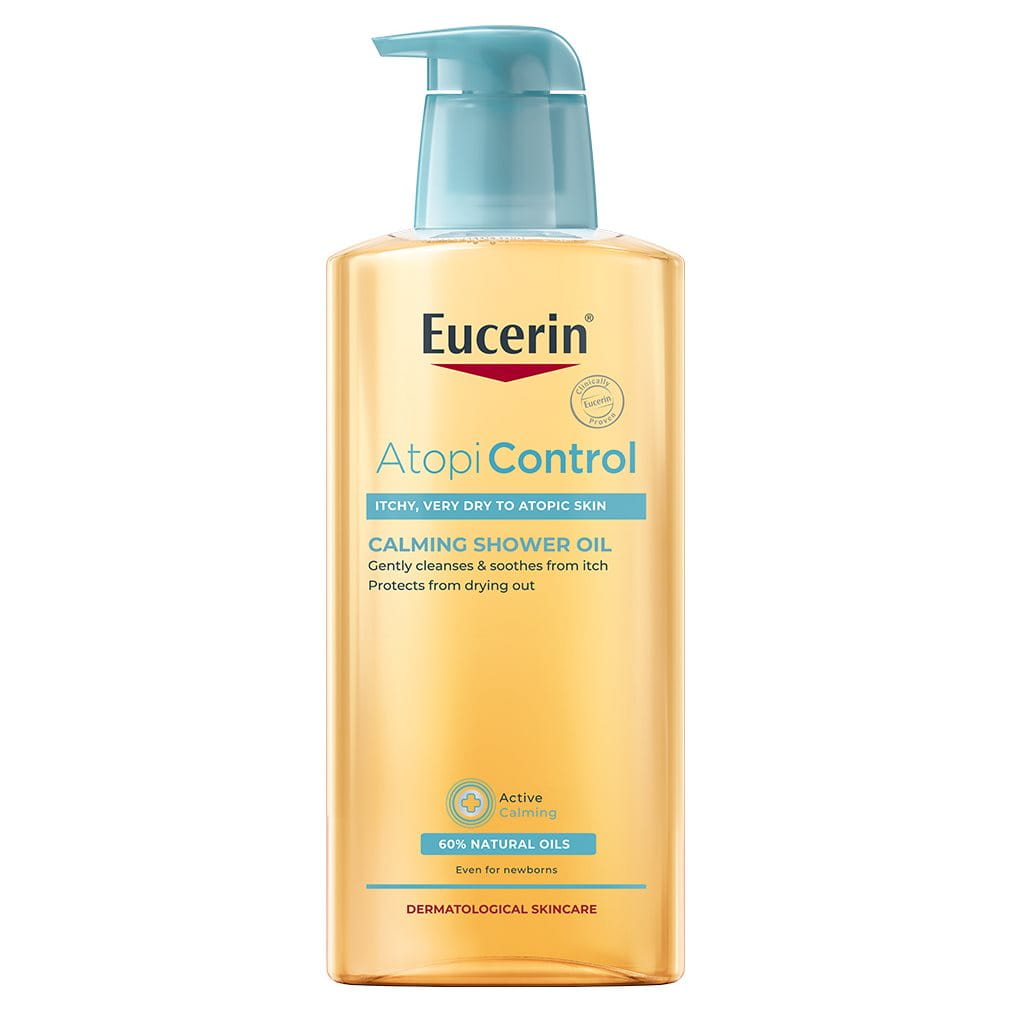Atopic Dermatitis (also known as Atopic Eczema) often flares-up on the face. This article explains how to recognise the symptoms, looks at the possible causes and triggers and makes suggestions about how to care for atopic skin on a daily basis and soothe and calm it during flare-ups.
The symptoms of facial Atopic Dermatitis are similar to those of Atopic Dermatitis anywhere on the body: skin is dry, red, itchy and irritable. Some people also feel stinging and/or burning sensations. Scratching the itch makes symptoms worse and skin can become damaged, infected and start to thicken.
Facial Atopic Dermatitis, as with all forms of Atopic Dermatitis, is particularly common in babies and children and normally appears when they are between two and six months old. The cheeks and forehead are often affected first but Atopic Dermatitis can spread to other parts of the body as they get older. Read more in Atopic Dermatitis and babies and Atopic Dermatitis and children.
Many children grow out of the condition but it can persist into adulthood and some adults experience facial Atopic Dermatitis without having had it as children. Adult facial Atopic Dermatitis can appear on the scalp, forehead and cheeks, behind the ears and in the delicate area around the eyes. You can read more in Atopic Dermatitis on the scalp.
Symptoms differ from person to person, from season to season, even from day to day and the disease has two distinct phases:
- The flare-up or acute phase when skin is at its most itchy and irritable
- The calmer period between flare-ups
Facial Atopic Dermatitis is particularly distressful because it is so visible. Whilst non-contagious, it can cause social issues for children and adults alike alongside low self-esteem. It is known to have a considerable impact on quality of life for both sufferers and their families.
Atopic Dermatitis is not the only kind of Dermatitis that can affect you or your child on the face. Other varieties include:
- Seborrheic Dermatitis: symptoms are similar, but skin is rarely itchy.
- Contact Dermatitis: an allergic reaction to something your face comes into contact with such as make-up (though make-up may also trigger symptoms of Atopic Dermatitis on the face).
- Light sensitive Dermatitis: when facial skin reacts to the sun. Sunlight can also be a trigger for Atopic Dermatitis, while other sufferers find that it can ease symptoms.
Atopic Dermatitis is a genetic disease linked to a compromised skin barrier function and an immune disorder.
Triggers vary from person to person but can include climate and pollution, stress, sensitivity to allergens and other external aggressors such as harsh facial cleansers or inappropriate make-up products. You can read more about these in Adult Atopic Dermatitis, Atopic Dermatitis and children and Atopic Dermatitis and babies.
The symptoms of Atopic Dermatitis are also its triggers. When your face is itchy it’s easy to scratch it which causes a bacteria known as Staphylococcus Aureus to multiply and infect the skin. This infection causes inflammation and itching which worsens the condition: a vicious circle known as the Atopic Skin Cycle.
There’s no known cure for Atopic Dermatitis, but there are steps you can take to reduce flare-ups (both the number and the severity of them), prolong the periods between flare-ups and calm and soothe skin during a flare-up.
Effective treatment needs an accurate diagnosis of your symptoms to check that you or your child do actually have Atopic Dermatitis rather than one of the other kinds of facial Dermatitis. Consult your doctor who will be able to advise you and recommend the most appropriate treatment for your skin. If you do have Atopic Dermatitis, then the following steps will help:
Identifying any potential triggers and taking steps to avoid or limit them is a key step to reducing the number of flare-ups.
Regular moisturisation
The primary aim when caring for atopic facial skin on a daily basis is to prolong the non-acute phase and regular moisturisation is crucial. Look out for moisturisers (also known as emollients) that contain proven ingredients such as:
- Licochalcone A: soothes skin and reduces redness
- Ceramides: strengthen skin’s barrier function
- Omega-3 and Omega-6: soothe and nourish skin while replenishing its protective barrier.
Specific care during flare-ups
Eucerin AtoControl Acute Care Cream (with anti-bacterial Decanediol and cooling Menthoxypropandiol) has been specially formulated to give skin the care and comfort it needs during flare-ups.
This product can be used alongside medical treatments which often help to calm severe symptoms.
Gentle cleansing
Harsh cleansers can irritate facial skin, so choose a mild facial cleanser. If you like to rinse your cleanser off with water, make sure it isn’t too hot as hot water can cause further dryness.
Sun protection
Some people find that a little bit of sun helps with their symptoms, others find it exacerbates them. Either way, make sure you give skin the protection it needs using products that are proven to be suitable for atopic facial skin. You can read more about the importance of sun protection in skin and the sun.
Make-up
Choose products that are fragrance-free and, ideally, that have been proven to be suitable for sensitive skin. Be sure to remove your make-up fully before you go to bed.
You can find out more about skincare for atopic skin in how to care for adult atopic skin.








